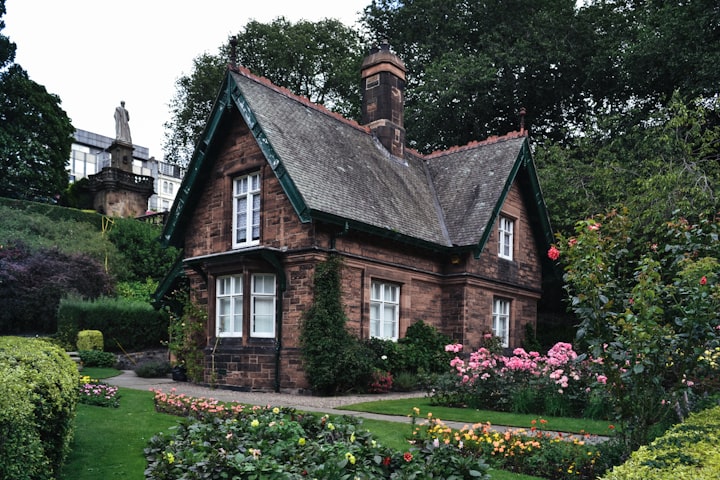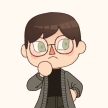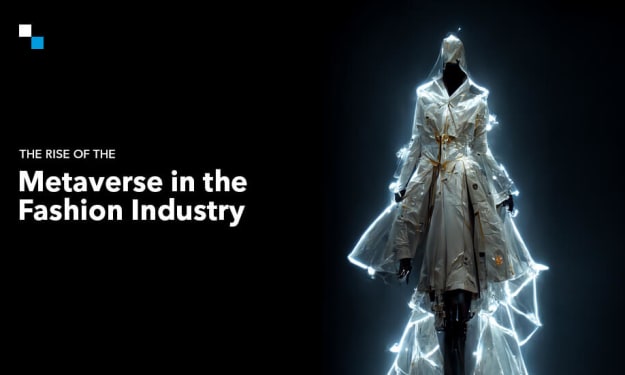The Poison of Maule’s Well and the Garden of Pyncheon: An Analytical Take
A close reading analysis of Nathaniel Hawthorne’s House of the Seven Gables

Sown are the seeds of decay to the Pyncheon line within Nathaniel Hawthorne’s The House of the Seven Gables, and the decay of the house settled upon the land of the wizard who once lived there. After the execution of Matthew Maule and the inevitable misfortune of the lineage following General Pyncheon, it is not unreasonable to conclude that Maule established the rot that would seep into the very soil of the lands of the Pyncheon family home for generations, altering the minds of the inhabitants and cursing them for their sins and transgressions of their forefathers. With Phoebe Pyncheon’s arrival and Holgrave’s tending to the house despite his Maule heritage, there is an undeniable truth that there is the chance and opportunity for a cure within the soil - breathing in new life to the house and its inhabitants from a newer perspective not bound to the sins of the father as so experienced by Hepzibah and Clifford Pyncheon. Nathaniel Hawthorne utilizes the return of life and activity within the house’s garden to mimic that of the progression the characters make to dispose of their own generational curse while adversely, the material attachment is what keeps them bound and held back from growing as a result of their ancestors’ ill deeds.
The garden of the House of Pyncheon prior to Phoebe’s arrival is tended by Holgrave, with permission given from Hepzibah. Considering Phoebe’s reaction to the garden - as “the eye of Heaven seemed to look down on it pleasantly” (67) - it invokes the notion that with Holgrave’s ties to being a Maule, his own hand working the soil of his own free will that was his ancestor’s is seen as that as a blessing considering the bloodshed for the soil in the first settling of the town. The fowl inhabitants are not nearly as welcoming; an embodiment of the Pyncheon lineage that has withered and been reduced to no longer be a proud breed, but the ties to the house keep them preserved, and it is further noted that as Phoebe gives them care and attention that they fall into an easy lifestyle, growing fat on the snails near the well and the spice-cake offerings of the country girl. Between the Pyncheon-chickens, the vegetables ready to be consumed, and the bees actively seeking the flowers of the garden, it shows that life anew has returned to the House of the Seven Gables, and not by Phoebe’s own reckoning; it is the changing of the tides, and with the most recent iteration of the Maule lineage willing to approach the ailing house with a blossoming hope.
Clifford Pyncheon’s return to the familial estate is something of a grand affair to the small town, and Judge Pyncheon’s abrupt arrival begins to press the notion that the healing of the home cannot be tempted by goods offered. Judge Pyncheon’s offer to Hepzibah, offering her anything material like that of “pictures, books, wine, luxuries of the table” (95) and his own house in the countryside just so he can witness the cousin he had condemned to prison, and seemingly harass him further through contempting mockery. This idea of material goods and the acquisition of them also connects to the exploitation of Alice Pyncheon within the legend of the family’s curse - as a means for the deeds to the lands in which the original founder of the lineage laid claim. Matthew Maule had then performed hypnotism to corrupt and dominate her spirit, thus leaving her to wither away in her sorrows - “[Matthew Maule] meant to humble Alice - not to kill her” (152); this cruel performance, desire, and grasping for the past and material goods only damns the Pyncheon line further, as the only goods they have gained are that of sorrows. Even Clifford’s character is defined as being that of a lover of the material and beautiful with specific emphasis on how disdainful he is of Hepzipah’s appearance despite her efforts - “her dress, and especially her turban; the queer and quaint manners … the instinctive lover of the Beautiful was fain to turn away his eyes” (100). The Pyncheon family does not grow when they remain attached to these material objects, and it instead binds them to the failing structure of the House of the Seven Gables.
Conversely, there is the growth from the labors of the garden that spawn material wealth not tainted by that of greed. As the reconstruction of the garden reaches the summer time and Phoebe sways the members of the house, Uncle Vernon, and Holgrave to bask in the fruits of their labors, it is evident that even those that crave the material can receive satisfaction through experience. “When Clifford heard the [the bees’] sunny, buzzing murmur … he looked about him with a joyful sense of warmth, and the blue sky, and green grass, and of God’s free air in the whole height from earth to heaven … God sent them thither, to gladen our poor Clifford” (108) - even the man so concerned with surrounding himself in beautiful things can find such purchase within the gardens of the Pyncheon family home, liberated from the confines of the darkened house and the ill will that has permeated the foundation. He had even been known to “show his love for beautiful things” to that of the hummingbirds (109), the fleeting beautiful creatures that are here only for a brief moment before continuing their migration and had seen it fit to return to the garden now sprawling with life anew; the growth so desperately needed by the Pyncheons can be gained by severing themselves from the moth-eaten linens that hide family portraits and closing the door to the house that plagues them.
The Garden of the House of the Seven Gables serves as a separate world for the reader to view the growth of the individuals within the house, providing an enhanced scope for how the familial dynamic evolves with the growth of the garden and the detachment of material pleasures in favor of an earthen nature. Through the cooperation between Phoebe Pyncheon and Holgrave’s Maule lineage, they heal the land of the sins of the father, and create their own garden of Eden.
—
Work Cited:
Hawthorne, Nathaniel, and Robert S. Levine. The House of the Seven Gables: Authoritative Text, Contexts, Criticism. 2nd ed., New York, W.W. Norton, 2005.
—
I used this analysis of The House of the Seven Gables for one of my higher level American Literature classes, and believe it offers a nice narrative analysis over the parallelisms between the Pyncheon gardens of the house and the status of the lives of the people who live there.
About the Creator
Lauren Girod
Undergraduate at the University of Georgia in English Creative Writing, 2024 | Sigma Tau Delta International Honors Society Member
Lover of fantasy and poet by choice - also a cynic and comedian.






Comments
There are no comments for this story
Be the first to respond and start the conversation.